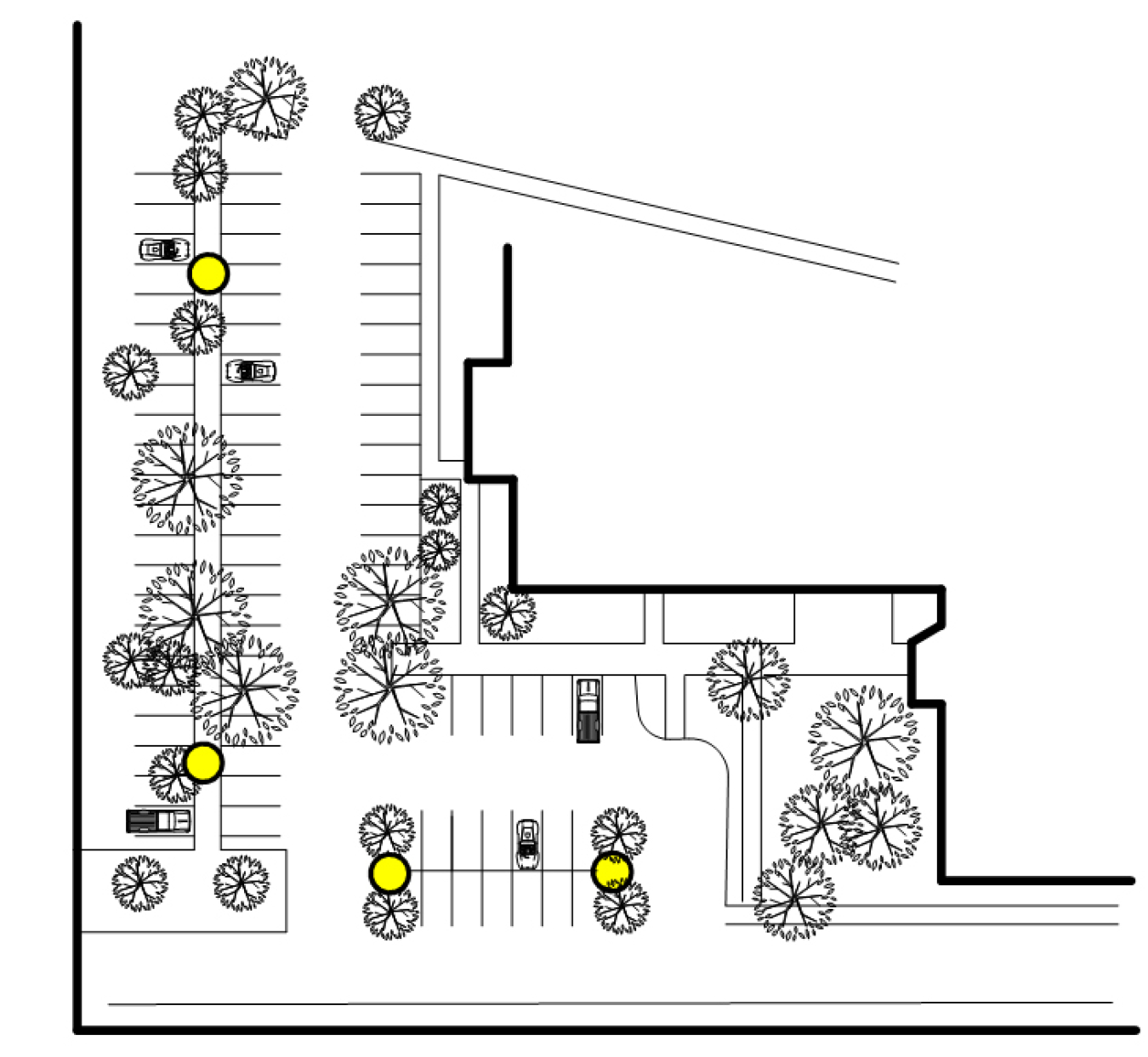ENTRY PROCESS
To begin, manufacturers submitted an Intent to Submit, followed by system documentation that was reviewed for compliance with the NGLS parameters. Systems were initially evaluated using the following functionality and performance criteria.
Systems must provide the following minimum functions.
Function/Capability | Required |
Presence Detection Based Control. See specific performance criteria below. | Y |
User-defined Schedule-based Control (astronomical and time of day) | Y |
User-defined Zoning | Y |
Power and Energy Monitoring | Y |
Control Implemented via Easily Interchangeable Control Node | Y |
Monitoring of Individual Luminaire Electrical Performance | Y |
Remote Accessibility for Configuration, Monitoring and Control | Y |
Alarms/Notifications. See specific performance criteria below. | Y |
Either fixture-integrated or Pole Mounted Sensor Mounting Options | Y |
- Using existing infrastructure for mounting presence sensors, detect presence over the largest possible parking lot footprint under the following circumstances:
- Detect a walking pedestrian within the parking lot boundary and switch lights from low to high.
- Detect a moving vehicle (both electric vehicle and internal combustion engine vehicle) within the parking lot boundary and switch lights from low to high.
- Detect a person exiting a stationary car parked within the parking lot boundary and switch lights from low to high.
- Provide user adjustable presence detection time out setting from 4 minutes to 30 minutes.
- Provide immediate (within 1 second) luminaire response upon presence detection.
- Provide user adjustable continuous output settings from 10% to 100% of maximum light output.
- Limit maximum control node standby power to 2 watts.
- On loss of communication to control node, provide user configurable option for control node to continue to operate the luminaire according to one or more of the following: a) default schedule, b) photocell, c) always-on.
- Provide the following alarms/notifications: a) electrical fault, b) communication fault, c) energy performance out of bounds.
Minimum efficacy (lm/W) | 100 |
Maximum CCT (K) | 3000 |
Minimum CRI | 70 |
BUG Rating | U0, G2 or lower preferred |
Light Loss Factor | 0.88 * lumen maintenance (LLD) at 25,000 hours |
Maintained minimum horizontal illuminance | 0.2 fc |
Max/min uniformity | 20 |
Maintained minimum vertical illuminance | 0.1 fc |
INSTALLATION
Installed on individual parking lots at VTTI, six systems replaced 58 luminaires on nearly 350,000 square feet of space to create a “living lab” where evaluations could be conducted in a real-world setting. The control systems included LightGRID (Current by GE), SimplySNAP (Synapse), wiSCAPE (Hubbell Control Solutions), NearSky (Cimcon Lighting), Limelight (Lutron) and DTL DSN (Acuity Brands). In terms of technology and design, the wireless control systems used a variety of technologies and approaches that featured wired (Ethernet) and wireless (cellular) gateways, remote and fixture-integrated sensor mounting, and passive infrared (PIR) and microwave radar sensors.
Upon acceptance into the NGLS Evaluation, individual parking lots were assigned to entrants and specific site geometry and drawings were provided. A representative parking lot (shown below) provides typical mounting heights and site geometry.
Pole Height: 30 ft
1 luminaire per pole
Parking Space Width: 9 ft
Drive Lane Width: 24 ft
Poles shown in yellow on drawing.

Representative lot, not to scale

